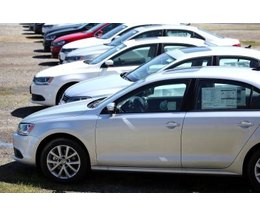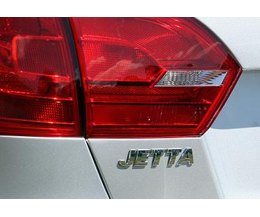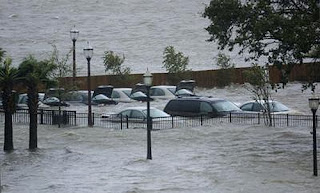Although a bad fuel pump or a blocked fuel line will prevent your car engine from starting, the most likely cause is a faulty ignition system. On the other hand, if the starter fails to turn the engine over, you either have a dead battery, a loose terminal or a faulty ignition switch. If the starter is working, one of two components has failed: the ignition coil, or the distributor. To isolate the problem, test each component in turn as follows.
Battery
 Switch the headlights on. If they light up normally and stay bright, the battery is sound. If not, the battery clamps may be loose and/or the terminals may be caked with green corrosion preventing proper contact. If this is the case, remove the clamps, flush the terminals with a mixture of bicarbonate of soda and water, then abrade the contact surfaces down to bare metal with coarse emery tape. Reconnect the battery, tighten the starter motor terminal nuts and try to start the engine. If this fails, you either have a dead battery or a faulty starter motor.
Switch the headlights on. If they light up normally and stay bright, the battery is sound. If not, the battery clamps may be loose and/or the terminals may be caked with green corrosion preventing proper contact. If this is the case, remove the clamps, flush the terminals with a mixture of bicarbonate of soda and water, then abrade the contact surfaces down to bare metal with coarse emery tape. Reconnect the battery, tighten the starter motor terminal nuts and try to start the engine. If this fails, you either have a dead battery or a faulty starter motor.
Ignition Switch
 Test the ignition switch after ensuring that the battery is sound by turning it halfway to the “on” position. If the warning lights on your dashboard fail to light up, the ignition switch is faulty. Another way to check is to turn the headlights on and then try to crank the engine. If the engine turns over and the lights dim or go out completely, the ignition switch is sound. If not, replace the ignition switch.
Test the ignition switch after ensuring that the battery is sound by turning it halfway to the “on” position. If the warning lights on your dashboard fail to light up, the ignition switch is faulty. Another way to check is to turn the headlights on and then try to crank the engine. If the engine turns over and the lights dim or go out completely, the ignition switch is sound. If not, replace the ignition switch.
Distributor
 Undo the spring clips on the side of the distributor and remove the distributor cap. Have a helper turn the engine over with the ignition switch and watch the rotor. If the rotor fails to turn, either the distributor drive gear has stripped, or the camshaft drive belt or gears are faulty and must be replaced by a qualified technician.If the rotor turns, look for signs of moisture inside the cap. If it’s damp, wipe the inside with a paper towel and dry out the cap and the distributor body with a hair dryer.Inspect the distributor cap for cracks, pitted or warn terminals around the perimeter, or signs of burns indicating an electrical short caused by carbon tracking. Inspect the edge of the brass contact on the rotor arm for signs of pitting or charring. If the distributor cap and/or the rotor are damaged, replace them.
Undo the spring clips on the side of the distributor and remove the distributor cap. Have a helper turn the engine over with the ignition switch and watch the rotor. If the rotor fails to turn, either the distributor drive gear has stripped, or the camshaft drive belt or gears are faulty and must be replaced by a qualified technician.If the rotor turns, look for signs of moisture inside the cap. If it’s damp, wipe the inside with a paper towel and dry out the cap and the distributor body with a hair dryer.Inspect the distributor cap for cracks, pitted or warn terminals around the perimeter, or signs of burns indicating an electrical short caused by carbon tracking. Inspect the edge of the brass contact on the rotor arm for signs of pitting or charring. If the distributor cap and/or the rotor are damaged, replace them.
Ignition Coil
 Disconnect the high voltage lead connecting the coil to the center of the distributor cap. Use a piece of insulated wire to connect the loosened coil high voltage wire to the terminal of a spare spark plug and wrap some insulating tape around the connection. Strip the insulation off the ends of a second piece of wire. Twist one end around the spark plug threads and connect the other end to a suitable ground point on the engine. Attach a third “jumper” wire to the green negative terminal on the coil and turn the ignition switch to the “on” position. Tap the end of the jumper wire against a good ground point on the engine while watching the spark plug. If you see a strong white spark leap across the plug terminals every time you tap the wire on the engine, the coil is sound.
Disconnect the high voltage lead connecting the coil to the center of the distributor cap. Use a piece of insulated wire to connect the loosened coil high voltage wire to the terminal of a spare spark plug and wrap some insulating tape around the connection. Strip the insulation off the ends of a second piece of wire. Twist one end around the spark plug threads and connect the other end to a suitable ground point on the engine. Attach a third “jumper” wire to the green negative terminal on the coil and turn the ignition switch to the “on” position. Tap the end of the jumper wire against a good ground point on the engine while watching the spark plug. If you see a strong white spark leap across the plug terminals every time you tap the wire on the engine, the coil is sound.
Ignition Coil Voltage and ResistanceTest.
 If you fail to get a good spark across the test plug terminals, do a coil voltage test. Set a volt-ohm meter to the direct current setting (DC). Turn the ignition switch to the “on” position. Place one of the probes against the terminal connecting the black wire to the coil and touch the other probe to a good ground point on the engine. You should get a reading of approximately 12 volts. Repeat this test on the coil’s green ground terminal; you should get the same reading of about 12 volts.Adjust the volt-ohm meter to the ohms resistance setting. Touch one of the probes to the black positive wire on the coil, and the other probe to the green negative wire to test the coil’s primary resistance. The reading should be between 0.4 and 0.6 ohms. To test the coil’s secondary resistance. Insert one of the probes into the central high voltage terminal on the coil and touch the other probe on the green negative terminal on the coil. The reading should be somewhere between 5,000 and 7,200 ohms. If the coil fails any of the above tests, replace it to correct your dead ignition system.
If you fail to get a good spark across the test plug terminals, do a coil voltage test. Set a volt-ohm meter to the direct current setting (DC). Turn the ignition switch to the “on” position. Place one of the probes against the terminal connecting the black wire to the coil and touch the other probe to a good ground point on the engine. You should get a reading of approximately 12 volts. Repeat this test on the coil’s green ground terminal; you should get the same reading of about 12 volts.Adjust the volt-ohm meter to the ohms resistance setting. Touch one of the probes to the black positive wire on the coil, and the other probe to the green negative wire to test the coil’s primary resistance. The reading should be between 0.4 and 0.6 ohms. To test the coil’s secondary resistance. Insert one of the probes into the central high voltage terminal on the coil and touch the other probe on the green negative terminal on the coil. The reading should be somewhere between 5,000 and 7,200 ohms. If the coil fails any of the above tests, replace it to correct your dead ignition system.- Drop your comments on any other issue that can cause the ignition from start.













